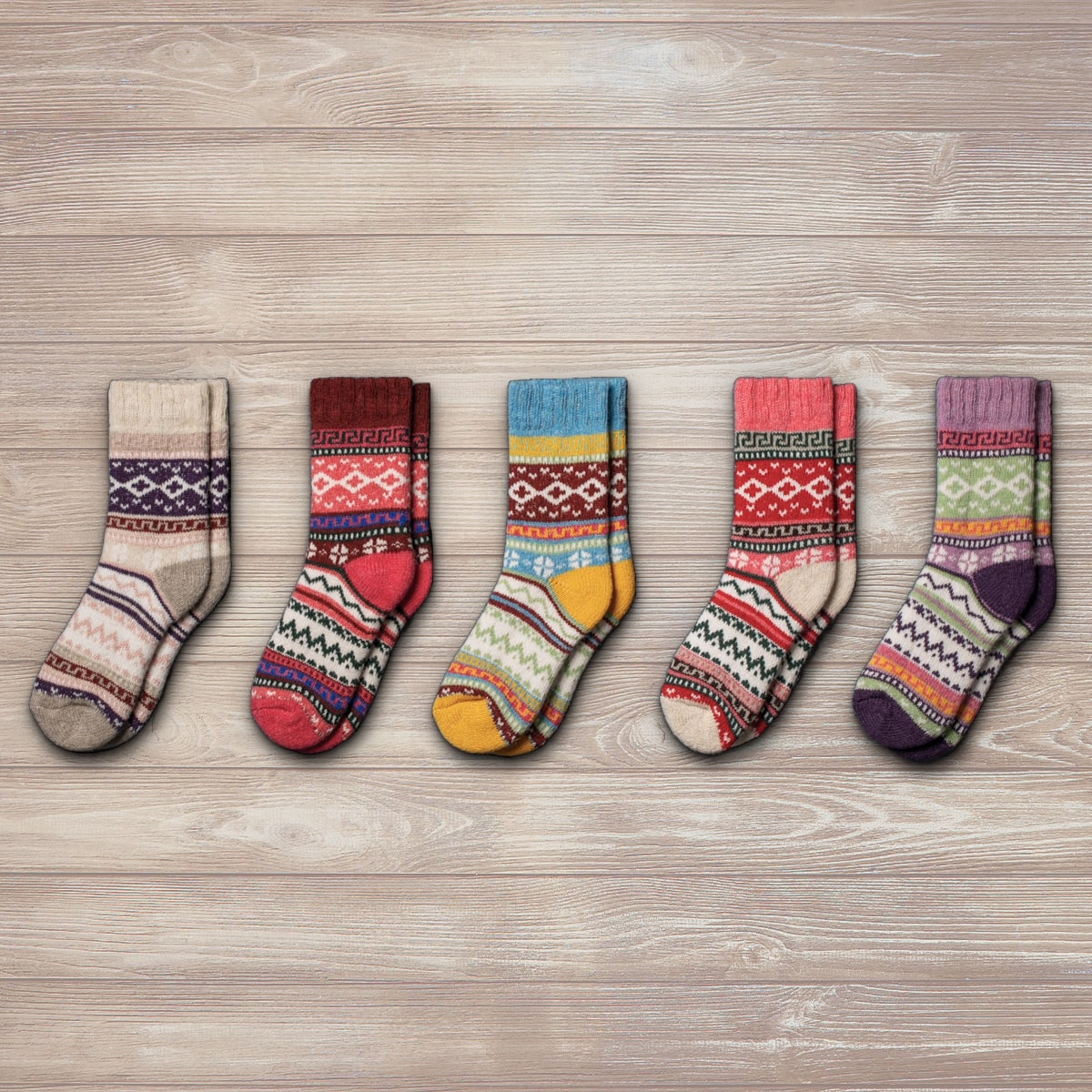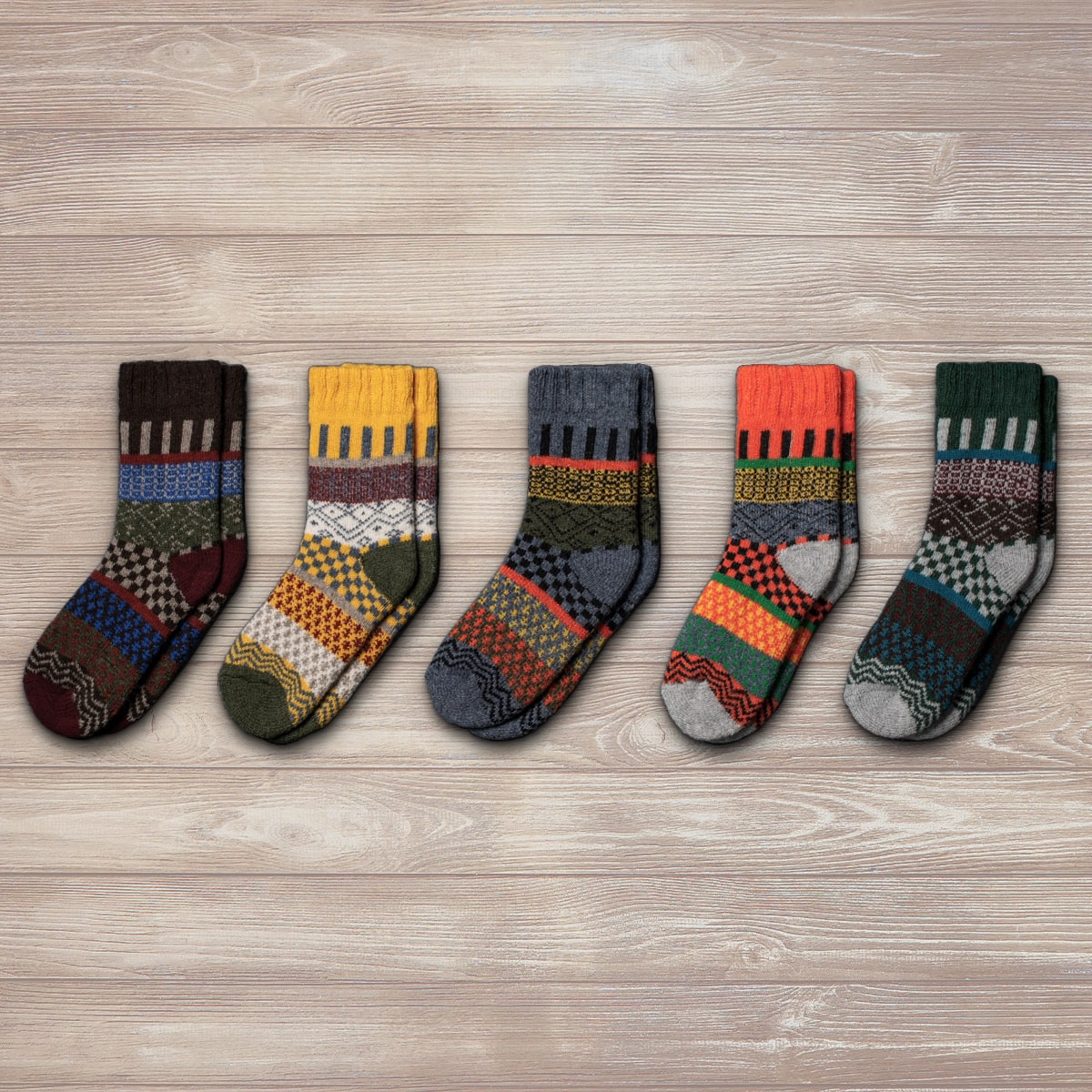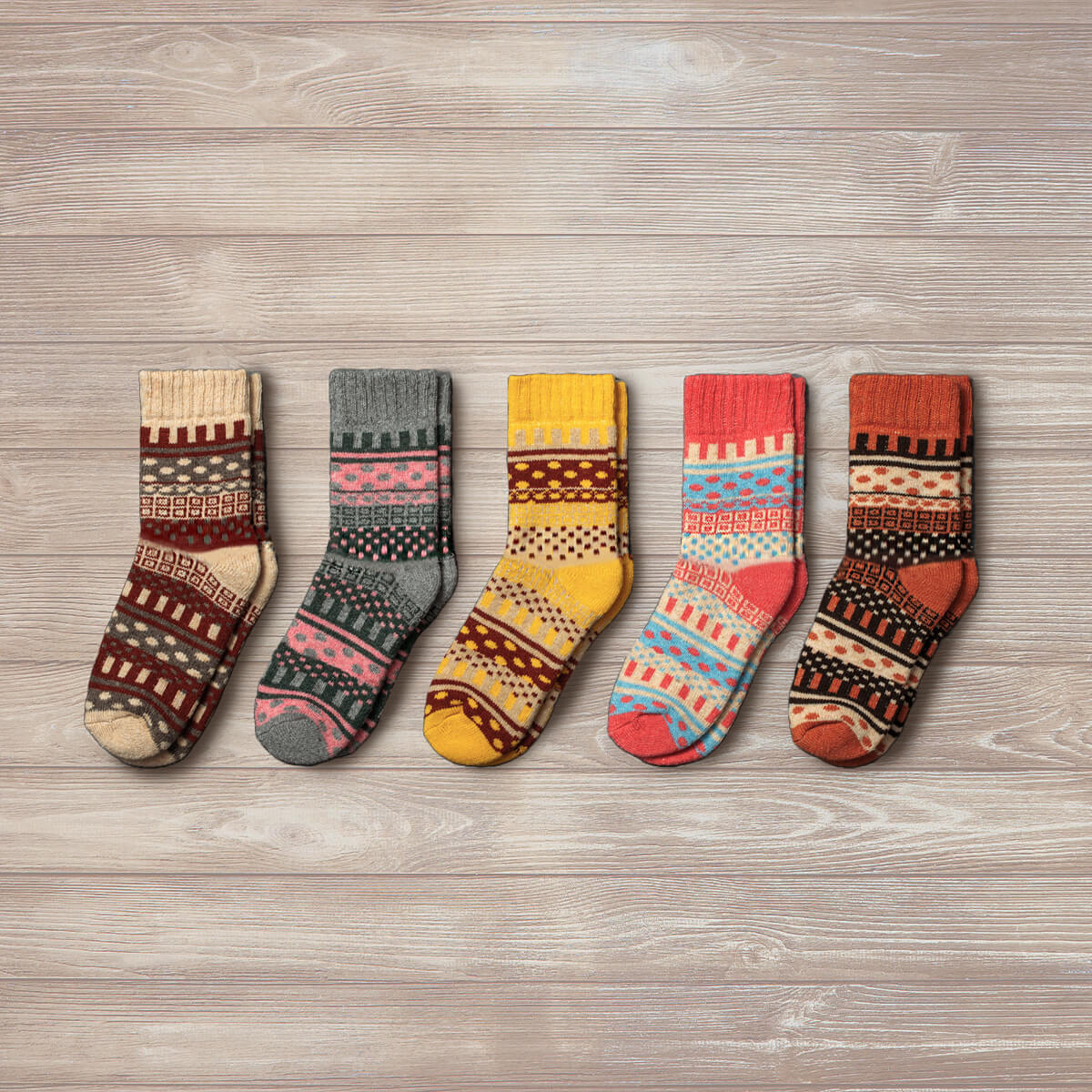Your Cart is Empty

What Are the Best Outdoor Socks?
Where are we shipping to?
Purchase from your country’s website.
It’s the fastest way to pamper your feet with comfy socks.
Besuche unseren Schweizer Shop
Besuche unseren Schweizer Shop

4 min read
If you lead an active lifestyle, then you know how important it is to choose the proper footwear for maximum comfort. And when it comes to footwear, your socks are just as important as your shoes. Whether going for a stroll or a demanding hike, the type of outdoor socks you wear can make all the difference in your overall experience.
So, how do you choose the right pair for you? Let's take a closer look at the different categories of outdoor socks based on their function and fabric.
For difficult treks and challenging terrains, hiking socks are indispensable. Crafted with moisture-wicking materials, these socks maintain dryness and a steady temperature for your feet. Additionally, they prioritize comfort and minimize friction, reducing the likelihood of blisters. Their distinctive higher cut and robust padding guarantee stability, even under the load of a heavy backpack.
Running socks boost mobility through stretch and cushioning fabrics, enabling peak performance and unrestricted movement. These socks absorb moisture and control odor, making them the perfect choice for athletes.
If you have a job that demands physical activity and requires you to stand for long periods, then you understand the importance of selecting the appropriate socks. That's where work socks come in. These socks are specially engineered to absorb sweat, keep your feet dry, reduce odor, and allow your feet to breathe. Regular socks are not recommended for heavy-duty work and do not provide the essential benefits of working socks.
When it comes to long walks, investing in the right socks is important. Walking socks are designed to provide your feet with the proper cushioning, support, and comfort needed to prevent blisters and soreness on various terrains and in different weather conditions.
Working in construction is one of the most physically demanding and hazardous jobs, so it's crucial to prioritize your safety. Heavy-duty socks are designed to provide additional foot protection while also being moisture-wicking and odor-absorbent.
Regular socks aren't cut out for this type of work and won't give the necessary support and protection. Whether working or enjoying outdoor activities, your feet deserve the best possible safety and comfort. The right pair of heavy-duty socks can make all the difference.
Cycling socks are meticulously engineered to fit cycling shoes snugly, their cut differing from running or regular socks. The type of cycling you partake in dictates your sock choice, with standard variants being lightweight and mountain biking ones featuring enhanced padding for rough terrains.
Materials such as polyester and elastane, synthetic fibers known for their durability and elasticity, create socks that seamlessly follow the movement of your foot during various activities like running, walking, or hiking. Their ability to retain shape after numerous washes and rapid drying makes them an excellent choice for outdoor activities. However, synthetic socks can sometimes develop odor due to their moisture-wicking properties. While these materials are effective at pulling sweat away from the skin, they are not as efficient at allowing that moisture to evaporate as natural fibers like cotton or wool.
Mixed fabric socks, combining various synthetic and natural materials, come with many benefits and a few considerations. The advantage of mixed fabrics lies in their ability to merge the strengths of different materials. For example, blending lightweight cotton with moisture-wicking synthetic fibers can enhance breathability and moisture control. Additionally, insulating and odor-absorbing wool contributes to comfort and odor prevention. However, the potential downside lies in finding the right balance – while mixed fabrics can offer the best of both worlds, they might also come with challenges in terms of durability and maintenance.
Cotton is a popular material for socks, boasting several advantages and drawbacks. On the positive side, cotton socks are renowned for their softness, offering comfort throughout wear. They are breathable, allowing air circulation and preventing excessive moisture buildup. Cotton is also a natural and eco-friendly choice. However, cotton socks tend to retain moisture, potentially leading to dampness and discomfort. They may also wear out more quickly compared to synthetic options.
Wool stands as an excellent material for outdoor socks. Offering insulation and warmth, wool excels even in harsh weather. It also cushions against friction and prevents blistering. Merino wool, renowned for being less itchy, retaining heat even when wet, and virtually odorless, often combines with other materials like cotton and synthetics for optimal performance.
Crafted from premium Merino wool and cotton, our Scandinavian-inspired Nordic socks are the ultimate companions for outdoor escapades, offering a versatile solution for all weather and terrains. In addition, our Nordic socks are knitted with a secondary loop to provide extra cushioning. This manufacturing technique makes them incredibly soft and warm, the ideal foot comfort provider.
When selecting outdoor socks, it's crucial to factor in your specific requirements and the materials used in their production. Whether your pursuits involve construction, cycling, running, hiking, or any form of physical activity, there's a perfect pair of outdoor socks designed to cater to your preferences.
Absolutely. Merino wool can retain up to 30% of its weight in water without the fabric getting wet, thanks to its fibers' unique "crimped" design. Therefore, you don't have to worry about any uncomfortable moisture on your feet when wearing Merino wool outdoor socks.
In addition to keeping your feet dry, our Merino wool socks will also keep them cool. The fabric maintains a balanced temperature throughout the wear thanks to the air pockets in its structure.
The best socks for working outside in winter are those made from a blend of materials that provide both insulation and moisture-wicking properties. Look for socks made with Merino wool, as these materials offer excellent warmth and moisture management.
Additionally, consider socks with cushioning in the sole and a snug but not overly tight fit to provide comfort and prevent blisters. Choosing knee-high socks that are tall enough to cover your ankles and keep cold air from entering your boots is also a good idea. Overall, prioritize socks that keep your feet warm, dry, and comfortable during winter outdoor work.
Felix has dedicated over four years of his career to fashion journalism, primarily focusing on socks-related topics. He has covered many subjects, including the latest sock trends, the evolution of sock technology, and innovative designs revolutionizing the sock industry.
Join our email list and get exclusive offers and 10% off on first order.
 Are wool socks good for summer?
Are wool socks good for summer?  The Cultural Inspiration Behind Our Sock Designs
The Cultural Inspiration Behind Our Sock Designs  How to Care for Cotton Socks
How to Care for Cotton Socks  Wool vs Cotton Socks for Hiking: Which is the Best Material for Hiking Socks?
Wool vs Cotton Socks for Hiking: Which is the Best Material for Hiking Socks?  Foot Health: How Nordic Wool Socks Support Your Wellbeing
Foot Health: How Nordic Wool Socks Support Your Wellbeing Sign up to get notification about new articles, special offers and new products.
Get the newsletter to receive direct information about offers and new products.
Purchase from your country’s website.
It’s the fastest way to pamper your feet with comfy socks.



















